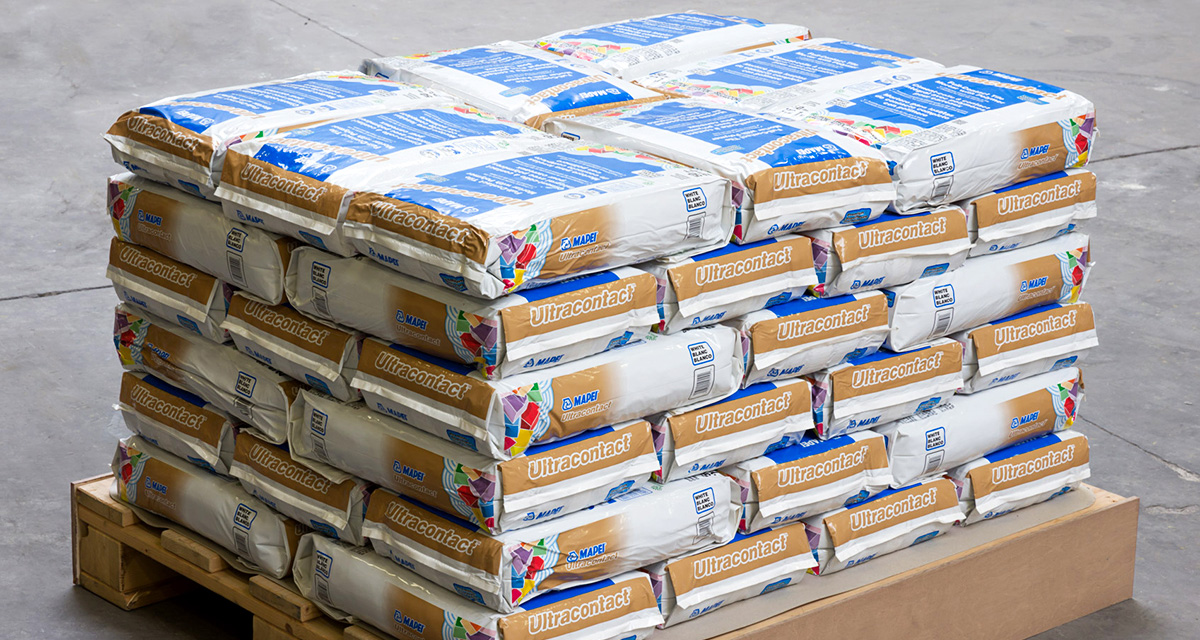Many in the cement industry have already opted to make the switch from paper to plastic bags. What was their rationale, and has it given them what they expected? There are a number of reasons to switch over with each having their own benefits. A pioneering choice, it would appear. Is making a choice so simple? Unfortunately not. There are a number of technologies and options each with their own advantages and disadvantages. So, make sure you get some good advice.
Arodo was the first company to start packing cement in plastic and can offer various systems currently on the market. So, it is certainly worth taking some expert advice for bagging cement.
The advantages of bagging cement in plastic bags
“Around the turn of the century a customer in the UK asked us to develop a cement packing machine for bagging cement in plastic bags”, explains Frank Goris, Technical and Commercial Director at Arodo. “As we always try to meet the needs of our customers, we rose to the challenge and started carrying out some tests.”
After these tests, the advantages of packing cement in plastic bags became apparent:
- Packaging
- Environmental-friendly solution
- Less wastage
- Easier to recycle
- Lower packaging costs
- Better printing possibilities
- Product
- Substantial longer life expectancy
- Storage & Transport
- Water and weather resistant unprotected open-air storage
- Keeps storage clean: no product leaking
- Dust and spillage free

Packing cement: fully automatic packaging in plastic bags
Opting for bagging cement in plastic bags is a logical choice. But then we come to the packaging process. Fully automatic cement bagging in plastic is technically not a simple matter. If you look at valve fillers at the cement plants it’s obvious straight away. The product is pressed into the bag, while bags are made round so the maximum amount of product with air can be put inside. Then the bags are flattened so the air can escape through the many holes in the bag, and the bags can be stacked on a pallet. But this process does not work well with a closed plastic bag. The air leaving the product causes air to come in that cannot escape.
We at Arodo offer the following bag types to counter this phenomenon:
- A perforated bag: a bag with small openings so the air can escape but water can also enter. These types of bags are therefore not usually used for pure cement.
- A labyrinth bag: a bag that has openings so the air can gradually escape but water cannot penetrate the bag.
- The AROVAC® bag: a fully-sealed bag that cannot be deaerated after closing. The air is removed (vacuum percentage) before the bag is sealed.
The technology for filling the different types of bags is also different. Perforated bags and labyrinth bags can be processed on the same machine. The fully sealed AROVAC® bag must be filled using the AROVAC® vacuum technology. For cement mixtures or cement-based products that absorb (almost) no air (e.g. concrete), yet another method can be used. The different bag types with associated packaging technology give different results. The differences can be seen in pallet stability, being dustproof, and obviously the price of the bag.

Cement bagging: the price of the bag
In the field of cement bagging, the bag price largely depends on the weight of the empty bag. The perforated bag has the lowest weight. A labyrinth bag needs an extra foil to create the labyrinth along the whole length of the bag. The fully sealed AROVAC® bag then needs an extra length at the top of the bag. The reduced pressure on the bag means the fully sealed bag can be made with thinner foil than a labyrinth bag. The total weight of the labyrinth bag and of the fully sealed AROVAC® bag will be approximately equal for this reason.
With the manufacture of a lay-flat tube, a tube is first made, the bag is cut in the longitudinal direction and then printed. After printing the foil is again joined in the longitudinal direction to form a tube. Cutting through is not necessary if more simple coloring is chosen for printing. Printing is in that case less expensive for the perforated or AROVAC® bag.
Bagging cement: making the right choice
When it comes to bagging cement, it is best to be assisted by one of our experts when deciding on the bag and associated technology. Bag price, pallet stability, the appearance of the bag… each element is important when making your choice for bagging cement. At Arodo, we have the most extensive range of bag filling machines for building materials such as cement and cement-based products. But that's not all: we also produce machines for the perforated bag, the labyrinth bag, and the fully sealed AROVAC® bag.
